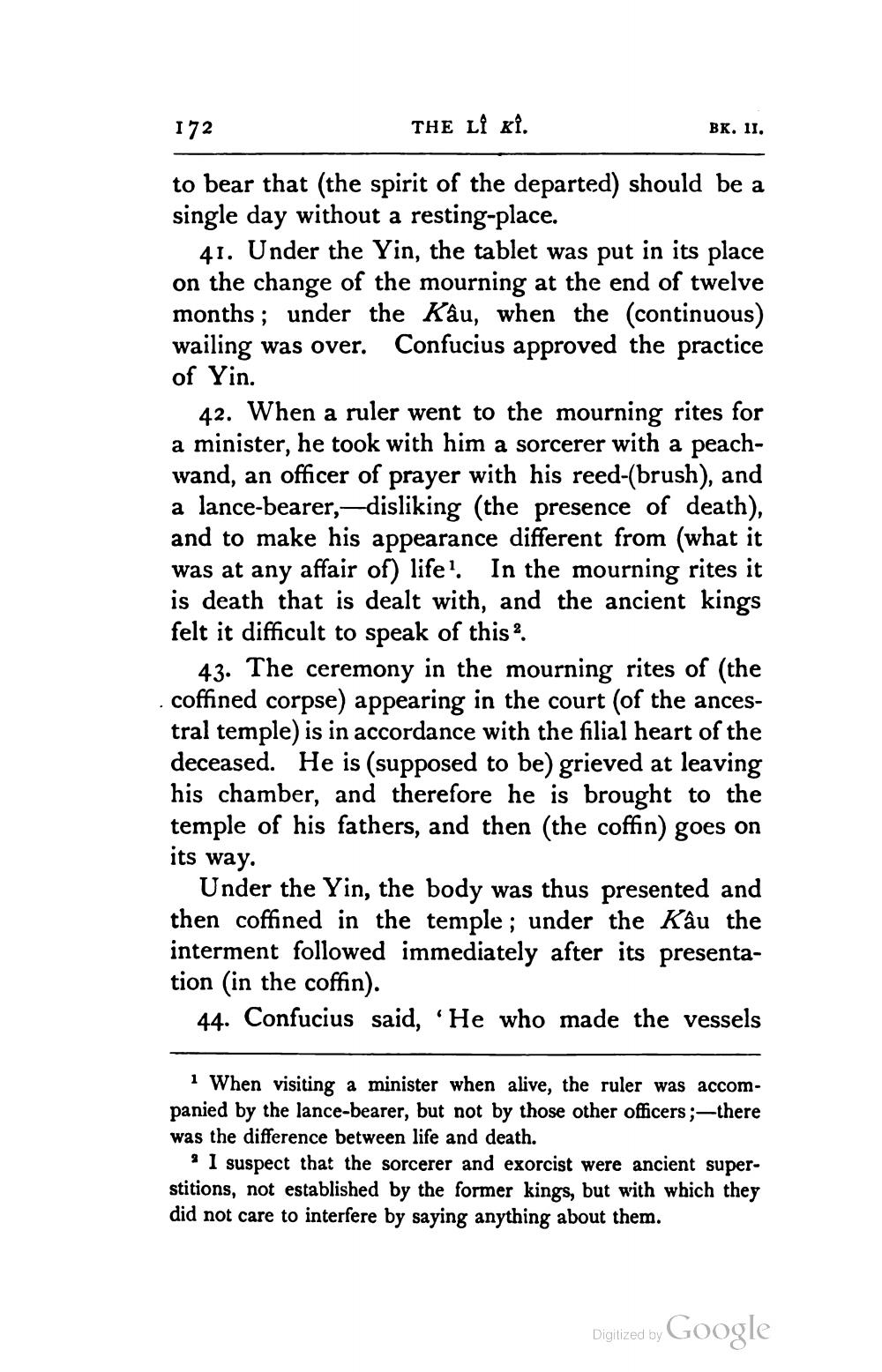________________
172
THE LÎ ki.
BK. 11.
to bear that (the spirit of the departed) should be a single day without a resting-place.
41. Under the Yin, the tablet was put in its place on the change of the mourning at the end of twelve months ; under the Kâu, when the (continuous) wailing was over. Confucius approved the practice of Yin.
42. When a ruler went to the mourning rites for a minister, he took with him a sorcerer with a peachwand, an officer of prayer with his reed-brush), and a lance-bearer,—disliking (the presence of death), and to make his appearance different from (what it was at any affair of) life? In the mourning rites it is death that is dealt with, and the ancient kings felt it difficult to speak of this?
43. The ceremony in the mourning rites of (the coffined corpse) appearing in the court (of the ancestral temple) is in accordance with the filial heart of the deceased. He is (supposed to be) grieved at leaving his chamber, and therefore he is brought to the temple of his fathers, and then the coffin) goes on its way.
Under the Yin, the body was thus presented and then coffined in the temple ; under the Kâu the interment followed immediately after its presentation (in the coffin).
44. Confucius said, He who made the vessels
1 When visiting a minister when alive, the ruler was accompanied by the lance-bearer, but not by those other officers; there was the difference between life and death.
' I suspect that the sorcerer and exorcist were ancient superstitions, not established by the former kings, but with which they did not care to interfere by saying anything about them.
Digitized by Google




